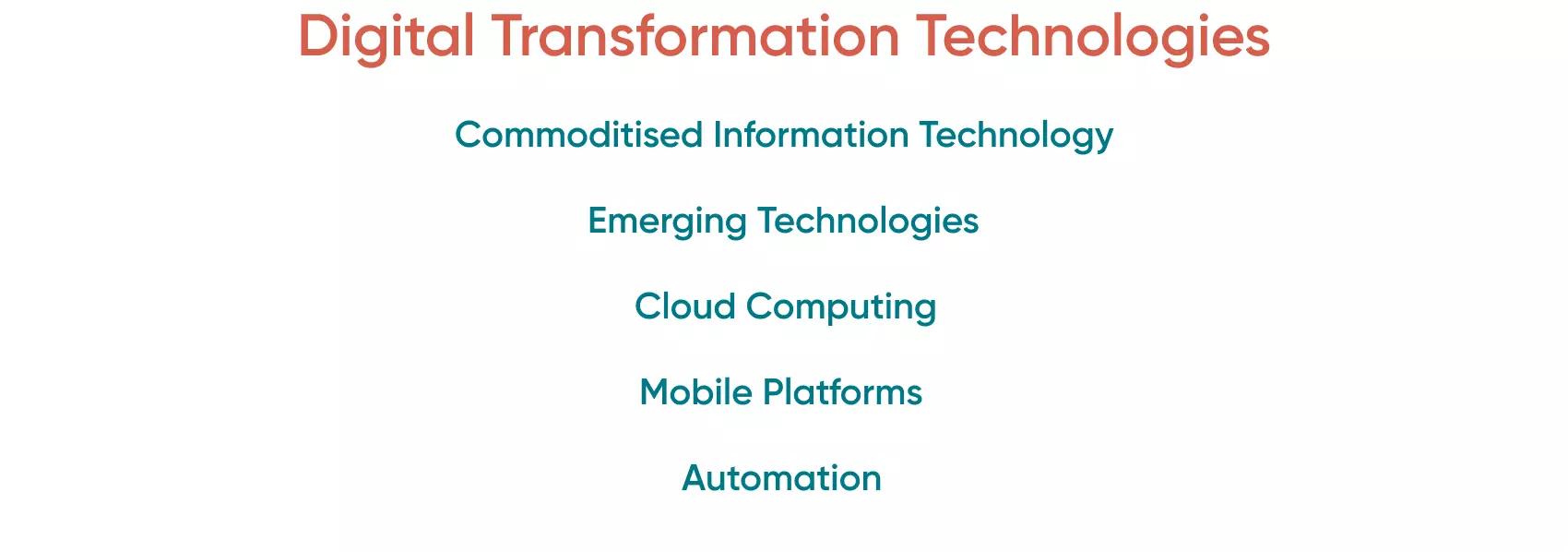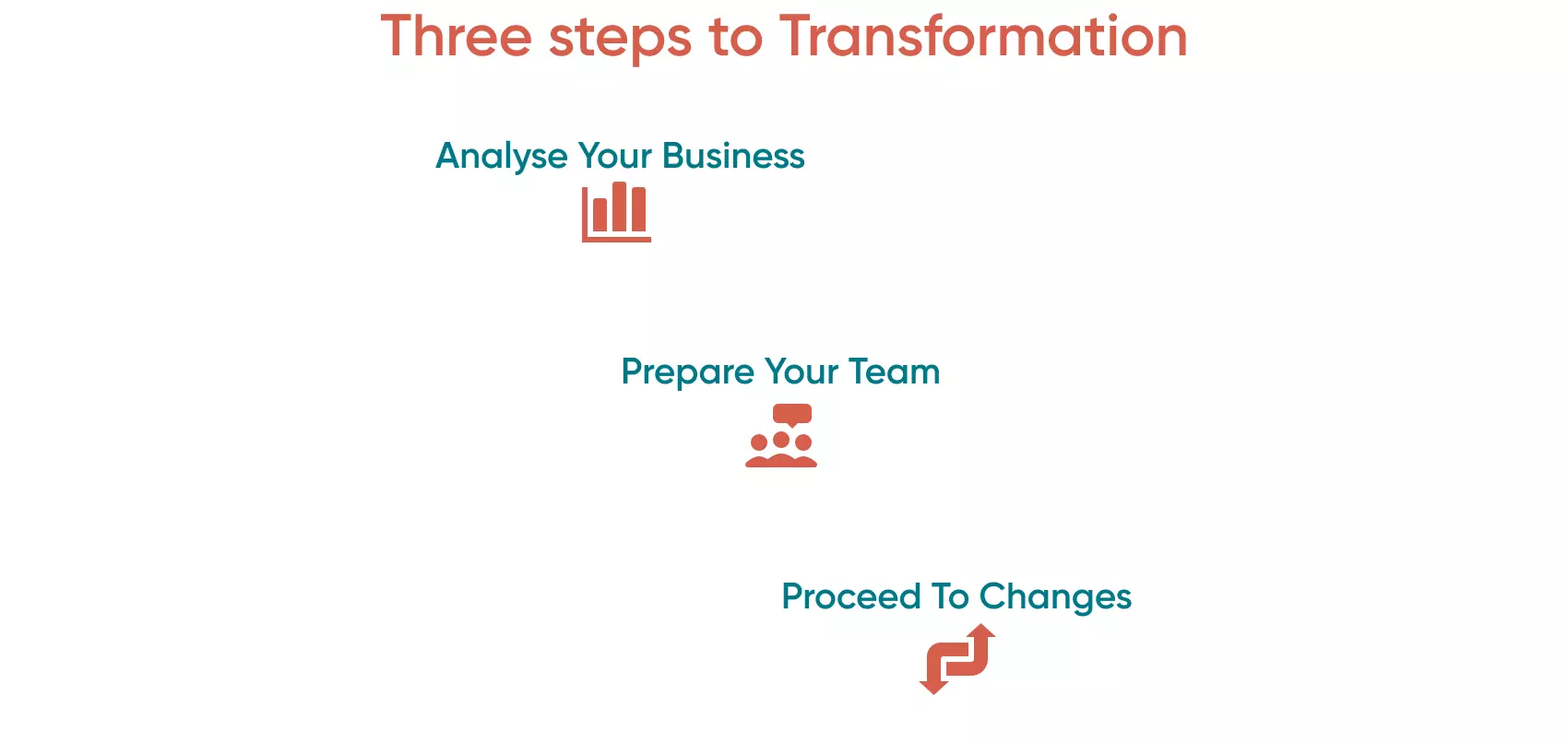The Importance of Digital Transformation for SMEs


What matters and a strategy to make it a reality for small and medium-sized businesses
With the change in consumer behaviour, businesses will need to develop a clear roadmap for the deployment of new technologies to help them survive and prosper.
According to Gartner, 91% of businesses are engaged in some form of digital initiative, and 87% of senior business leaders say digitalisation is a priority. Additional research suggests that market pressures are the primary driving force behind digital transformation. Growth opportunities account for 51%, and competitive pressures for 41%.
Regardless of the size of a business, CEOs and business owners need to ensure they have one eye on the future whilst dealing with the current growth. The digital transformation of SMEs has become a significant factor within all industries.
This article will be invaluable for everyone who plans to take their business online and transform it. First, we will explain what digital transformation means, its advantages and challenges, examples, and technologies. Then, of course, we will provide one of Go Wombat’s projects that shows how digital transformation works.
What Is Digital Transformation?
This approach is altering businesses with new strategies and integrating models, operations, products and marketing approaches based on digital technologies and data-driven approaches.
A digital business transformation is a distinctive feature of an informational society that generates extensive amounts of information. More advanced digital technologies are used to collect, store and process all this information. This system also has a hand in the big data analytics methods with so much information.
Automation and digitalisation — are they the same? Digital transformation is a global process that comes through all the company’s operations from A to Z, not only one or a few stages.
Imagine a card index system in a library, and you have come to take a book. A librarian looks through a card file for the relevant book in the card index manually and then goes to the relevant shelf. If there is a digital version of the card index, a librarian will find the information on the computer within a few seconds. However, it is only one process, so this is automation.
It is possible to digitise all books in the library and create an application so people can read books via this app. Also, it is possible to explore the behavioural preferences of users to make it more user-friendly. Monitor and analyse what products and services are more interesting for consumers and potential customers — this is digital transformation — at least one example.
Advantages Of Digital Transformation

According to Statista, spending worldwide on digital transformation is expected to reach $1.78 trillion in 2022.
Customer experience improvement
Customers are the main digitalisation driver. When customers obtain services, they assess and compare the quality level in different companies. Simply put, you can rate the service level, and your data like gender, age and other personal characteristics.
Digitalisation technologies can contribute to a more individual approach to the customer. Chatbots are a good example.
Customer experience doesn’t mean the interaction between the company and the buyer. Digital transformation also helps improve employees’ work, increasing their productivity.
Business processes optimisation
Digital transformation leads to a reduction in costs and growth in the company’s overall efficiency. However, when any company ignores the integration of modern technologies, its competitors, which use up-to-date business approaches, can leave behind it.
Speed and flexibility are essential to success: changes should be made when possible, not when there is an urgent need. Once the digital transformation of business processes is implemented, a company can respond to all actions faster and make the right decisions timely, to provide customers with relevant information as quickly as possible.
Advanced Capacities
Business improvement using digital transformation opens new ways for the development methods of the company. For example, cloud technologies enable a few groups of employees to work on one joint project, using resources effectively. In addition, process mining technology helps identify bottlenecks in business processes and optimises them efficiently and quickly. Everything goes better when there is a set of digital tools that simplifies workflow.
Working with data
Who owns the information, owns the world (Rothschilds). You probably know this saying. Information is the most valuable resource today, not money. Every second, people create tons of data in digital format, and companies need to collect, structure and explore it to use this information to their advantage. Digital transformation brings such innovative technologies as Big Data and Artificial Intelligence (AI), which help work with large amounts of data.
Better Partnerships
The digitalisation helps build connections between different companies, and it doesn’t matter how far they are from each other. Managing your business from any world region is possible, and digital tools contribute to it. You can do your business with different partners using relevant applications and web-based services built by experienced software development companies like Go Wombat.
Take your business to the digital world. Make it with Go Wombat! Contact us
Digital Transformation Technologies

Here we will cover technologies that are commonly used during digital transformation.
Cloud computing
Cloud storage and cloud-based services enable access to various docs and other important files from anywhere. As a result, your employees can do their job productively.
Commoditised Information Technology
You can apply widespread IT resources to customise your business processes and make them more competitive.
Mobile platforms
Mobile applications create more portability, and employees can do their job wherever they want. An Internet connection is the only thing they need. So the development of mobile applications is a necessary step to digitalisation and taking your business to the next level.
Automation
Robotic process automation, or RPA, is a subset of automation procedures that help employees automate repetitive and routine tasks, leading to higher accuracy and reduced possible errors.
Emerging Technologies
With such innovative technologies as Artificial Intelligence and Machine Learning, the Internet of Things, Big Data, Internet of Behaviour, blockchain, and AR/VR (augment and virtual reality), it is possible, as part of a digital strategy, to enhance and modify your business and add more fascinating features to your software so that you can increase the number of loyal customers.
Examples of Digital Transformation by Industry
Digital transformation can provide support for SMEs in any industry.
For example, the healthcare industry helps build new experiences both for patients and doctors. Patient portals, telemedicine, virtual visits, e-prescriptions, and even virtual reality for pain reduction therapies, simulations to identify problems, etc.
The hospitality industry changed when hotels started adding mobile check-in technology to reduce waiting time and increase guests' experience, Artificial Intelligence for facial recognition and building personalised experiences, and the Internet of Things for creating smart rooms for controlling devices and making comfortable stays.
Then, the insurance sector. Online portals of insurance companies may provide potential customers with instant quotes, and customers can also file claims via insurance portals. Predictive analytics (an AI-based technology) makes it possible for an insurance business to make the right decisions and predict any potential issues that may appear in the future.
Finally, of course, the retail industry simply cannot ignore the transformation. Augmented reality is used to attract customers and help them choose a product they like. Mobile apps help retail service providers reach customers via push notifications and target them with relevant and topical information. Algorithms within the IoB and AdTech, for analysing customer journeys and exploring customer experience, help increase sales and boost the company’s performance.
A live Project
Knowing everything about your customer is possible, and digital transformation enables it. We are working on another exciting project that helps other websites understand customer information.
What We Worked On
Simply put, there is a cloud data platform built for better insights, personalised experiences, and privacy. The project collects and structures data concerning website visitors and provides insights into customer motives to personalise the different marketing channels. Thus, this platform helps build the customer journey from the very beginning to the purchase stage.
This project allows customers to purchase an app. They install it, and then they can monitor users’ activity, what they buy, what products are more or less on-demand, their behaviour model, how much time they spend on a website, etc.
Two back-end developers and one front-end developer from our company are involved. Go Wombat didn’t create the project from scratch as it existed prior to our involvement. Our task was to improve and modify it. Primary customers are eCommerce websites, which can use customers' preferences to enhance their experience. The website is fully operational while we are adding new features and polishing it.
As for server-side development, one of our back-end developers has created an extension for email marketing. His task was to write code and unit tests, create data flow, and write documentation.
Challenges
The Project website hadn’t a well-thought-out architecture initially, and our developers needed to create a unified approach and standard and build a structured architecture. This was a time-consuming but interesting phase of the project.
The project front-end developer is building a new script with more capabilities using a new standard. It will help customers configure and customise this script to meet their business needs.
Tech Stack
As for the front-end part, the toolkit includes the following:
React library, TypeScript (a superset of JavaScript that compiles to clean JavaScript output, and it is suitable for larger applications);
ESlint (a static code analysis tool for identifying problematic patterns found in JavaScript code);
Prettier (enforces a consistent code style (i.e. code formatting that won't affect the AST) across your entire codebase);
axios and axios-hook (libraries for building requests to backend);
Material UI (a library that allows us to import and use different components to create a user interface in our React applications).
Recharts (A composable charting library built on React components).
Google Cloud Storage
A service for storing your objects in Google Cloud. An object is an immutable piece of data consisting of a file of any format;
Big Query. A cloud-based big data analytics web service from Google for processing enormous read-only data sets;
Pytest. A full-featured Python testing framework. Developers can run multiple tests in parallel, reducing the test suite's execution time;
Unittest. A unit testing framework ensures that all code meets quality standards before deployment;
Falcon. A high-performance Python web framework for building large-scale app backends and microservices;
Pub/Sub (Publish/subscribe messaging). A form of asynchronous service-to-service communication used in serverless and microservices architectures;
MongoDB/PostgreSQL. Non-relational and relational databases;
Redis (Remote Dictionary Server). An in-memory, persistent data structure store that enables developers to perform common operations with minimal complexity and maximum performance
Do you need to polish an existing software or build a new one from scratch? Contact Go Wombat!
Three Steps To Transform Your Business

Every business has nuances, and it is impossible to launch a unified, holistic approach that will help you transform your business in a blink of an eye. However, we have prepared a strategy to make your journey smoother and painless.
Analyse Your Business
You must ensure that all daily working processes are included in any Project Discover Phase in preparation for when a transformation occurs. This will help ensure it won’t impact your customers negatively.
Then, you should identify the pain points of your business — processes that must be transformed in the first place. Don’t try to transform everything at once — start with the essential processes.
As we mentioned before, customer satisfaction should remain at the same level. Therefore, the transformation process should be implemented wisely with the most significant value in mind — your customers.
Prepare Your Team
Your team should be participants in the transformation process. You won't achieve the required goal if they don’t understand what is happening. You should collect statistics and do marketing research to provide your team with all the gathered information. Then, it will be easier for you to explain to them what plans and intentions you have.
You should assign roles to each team member so that every employee will understand their responsibility for the digital transformation. As a result, they will be involved in the process and become more encouraged, realising how important it is.
Proceed To Changes
Here you will need to make a list of applications or any other software type you plan to create. Even if you entrust all software development to Go Wombat, you should have precise requirements of what your business needs. Also, draw up an approximate financial plan — how much you plan to earn with digitalisation and how much you need to invest. This will provide your ROI.
When your business starts transforming, use critical metrics required to monitor key indicators to understand whether your software meets customers' expectations or not.
Unlock Success with Premium Software Development
Contact us


Challenges To Consider: Why Digital Transformation May Fail

However, you should keep your eyes peeled and consider possible reasons your digital transformation won’t succeed. There are a few challenges that may get in the way.
Budgetary Constraints
Unfortunately, this is the primary reason for failure — your business cannot afford to transform your business and go online. This process requires substantial investment, and you should be prepared for it.
Poor Management
We mentioned that you must train your employees and explain why your business must be transformed. Training can be enabled due to relevant specialists who can perform digital transformation training.
Privacy Concerns
When your business goes online, all customer data should be protected, and any confidential information cannot be disclosed. Your software should have appropriate security measures installed to protect it from external threats.
Regulatory Changes
Finally, don’t forget to make your business compliant with local regulations such as GDPR, CCPA, or HIPAA. We have a more detailed article about HIPAA and GDPR certification. Simply put, since you process customer personal information, you must ensure that you use it properly and respect customer privacy.
In summary, we want to add that digital transformation is a complex yet vital process if you don’t want to lose out to your competitors and you want to help your business develop and grow. Our article provides the primary tips while our business development team can help you define the right software and estimate the development budget.
Our company is ready to become your software development team and create a project with you successfully.
Contact us, our development team is ready to help you!
How can we help you ?







